Bone broth has been a popular food for centuries. It has recently gained a lot of attention in the health and wellness community.
It is a nutrient-dense stock made by simmering animal bones and connective tissue for an extended period of time. Bone broth is a versatile food that can be used as a base for soups, stews, and other dishes. It can also be consumed on its own as a warm and comforting drink.
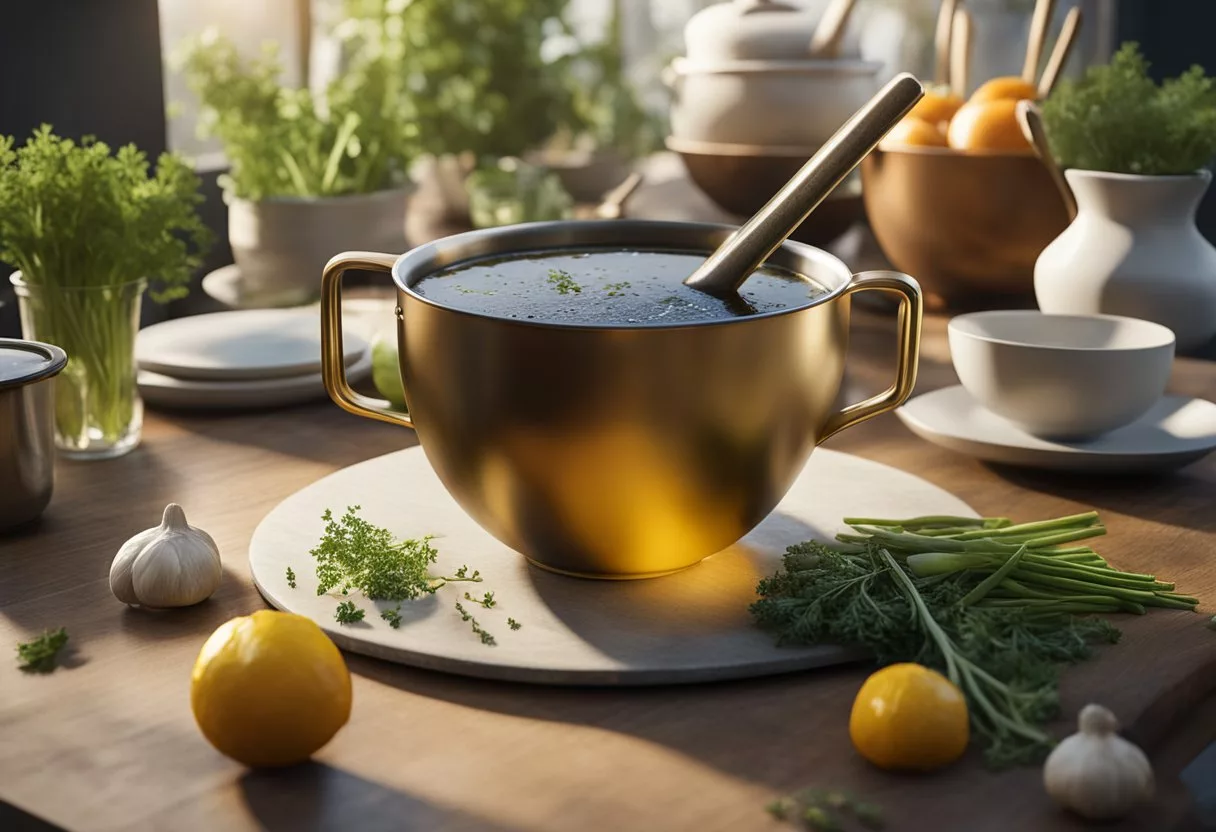
What Is Bone Broth? Bone broth is a stock made by simmering animal bones and connective tissue for an extended period of time. The bones used can come from a variety of animals, including chicken, beef, pork, and fish.
The connective tissue contains collagen, which is broken down during the cooking process into gelatin. This gives bone broth its thick, jelly-like consistency.
Health Benefits of Bone Broth Bone broth is packed with nutrients that can provide a wide range of health benefits. It is a good source of minerals like calcium, magnesium, and phosphorus, which are important for bone health. It also contains amino acids like glycine and proline, which are essential for the formation of collagen and other proteins in the body.
Additionally, bone broth may have anti-inflammatory effects and can help support the immune system.
Key Takeaways
- Bone broth is a nutrient-dense stock made by simmering animal bones and connective tissue for an extended period of time.
- Bone broth is a good source of minerals and amino acids that are important for bone health and the formation of collagen and other proteins in the body.
- Bone broth may have anti-inflammatory effects and can help support the immune system.
What Is Bone Broth?
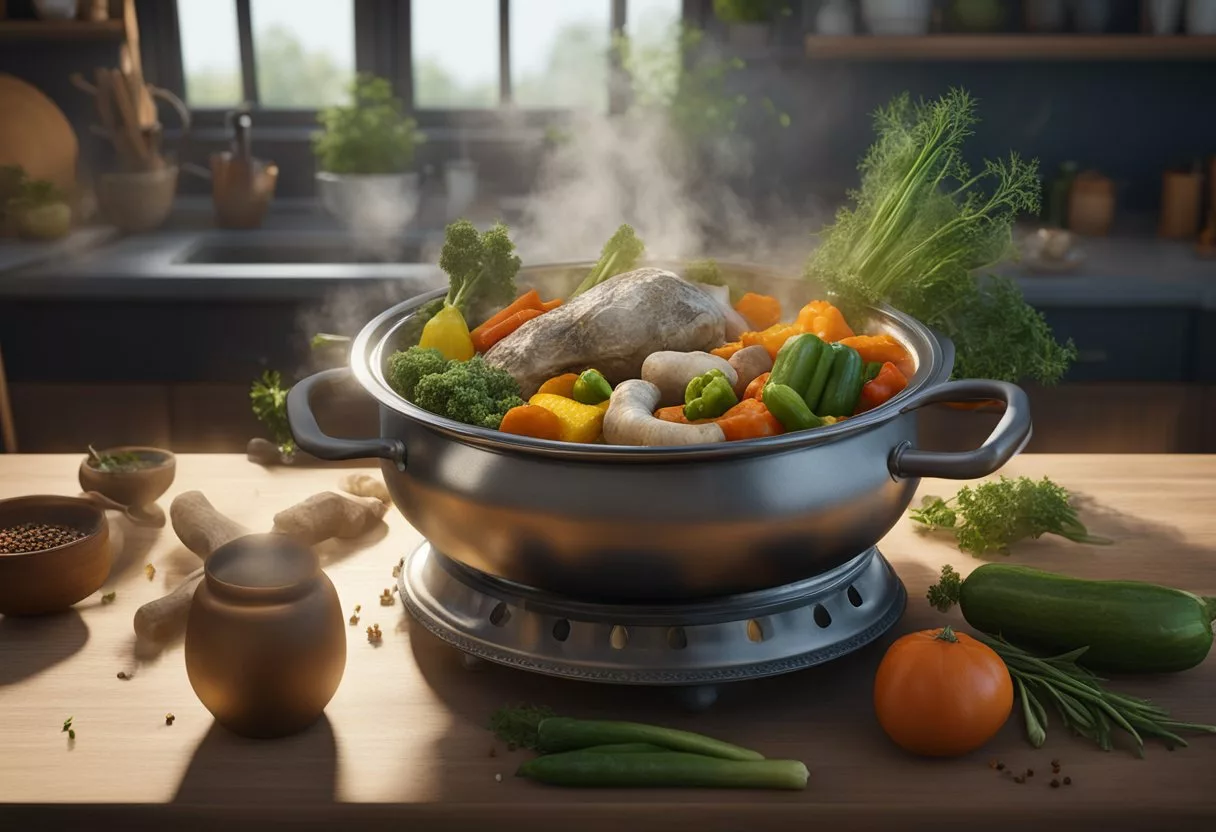
Bone broth is a nutrient-rich liquid made by simmering bones and connective tissues of animals in water for an extended period of time, typically 12-48 hours. The resulting broth is a flavorful and nutritious liquid that can be used as a base for soups, stews, gravies, or consumed on its own.
Historical Significance
Bone broth has been used for centuries in traditional cuisines and medicinal practices around the world. In many cultures, it is believed to have healing properties and is often used as a remedy for various ailments.
For example, in Chinese medicine, bone broth is believed to nourish the body’s vital energy, or qi, and is used to treat digestive issues, joint pain, and other health problems.
Bone Broth vs. Stock vs. Soup
While bone broth, stock, and soup may seem interchangeable, they are not the same.
Bone broth is made by simmering bones and connective tissues for an extended period of time, while stock is made by simmering bones with some meat and vegetables. Soup, on the other hand, is a more substantial dish that typically contains a variety of ingredients, including meat, vegetables, and grains.
Bone broth is distinct from stock and soup because it is made by simmering bones for a much longer time than stock. This results in a richer, more flavorful liquid that is also higher in nutrients.
Bone broth is particularly rich in collagen, a protein found in connective tissues that is important for skin, hair, and nail health, as well as joint and gut health. Bone broth is also a good source of amino acids, such as glycine and proline, which are important for overall health and wellbeing.
Health Benefits of Bone Broth
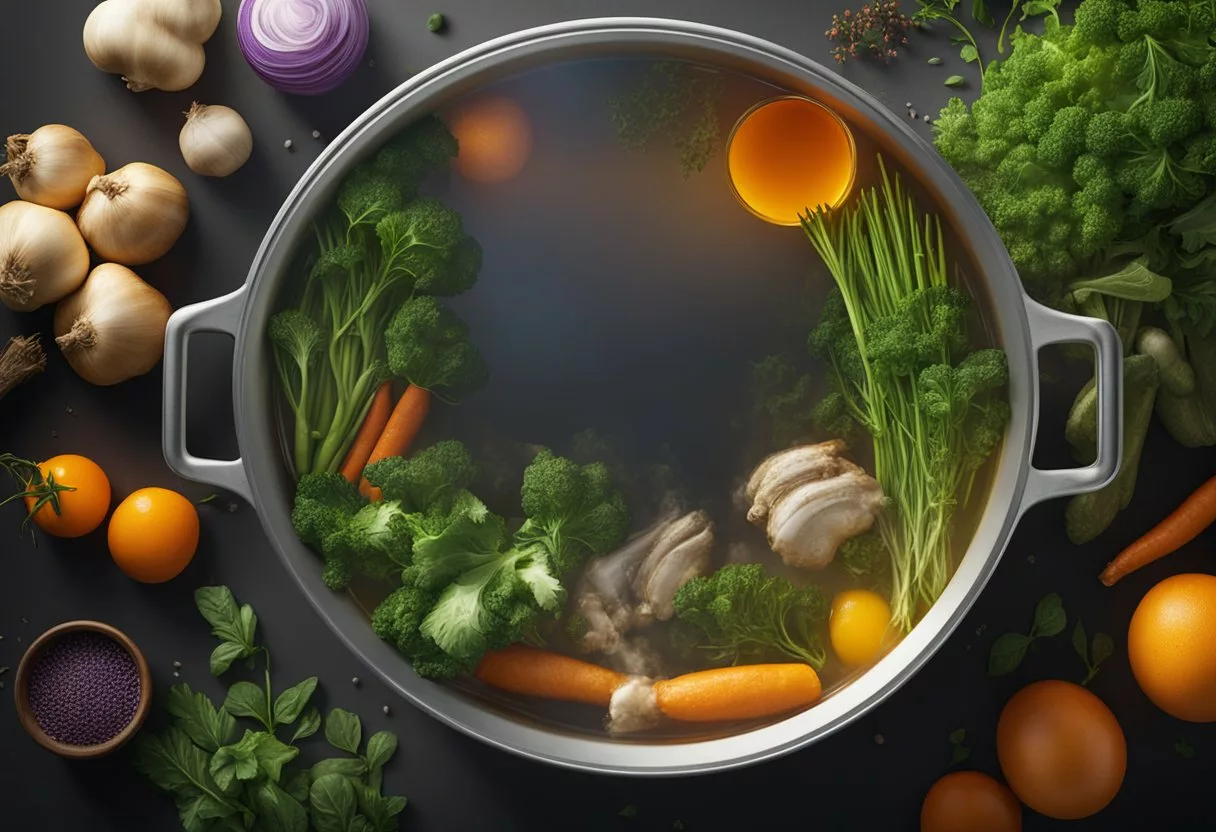
Bone broth is a nutrient-dense food that has been consumed for centuries. It is made by simmering animal bones and connective tissue for an extended period, typically over 24 hours. Bone broth is rich in minerals, collagen, glycine, and glutamine, which provide numerous health benefits.
Nutritional Profile
Bone broth is a low-calorie food that is high in protein and minerals such as calcium, magnesium, and potassium. It also contains iron, vitamins A and K, and essential amino acids that are necessary for maintaining good health.
Bone Broth for Joint Health
Bone broth is rich in collagen, which is essential for maintaining healthy joints, ligaments, and tendons. Collagen is a protein that provides structure and support to the body’s connective tissues. Consuming bone broth can help reduce joint pain and inflammation associated with arthritis.
Digestive System Support
Bone broth is an excellent source of glutamine, an amino acid that supports the health of the intestinal lining. Glutamine helps to prevent “leaky gut,” a condition in which the intestinal lining becomes damaged, allowing harmful substances to enter the bloodstream. Consuming bone broth can also improve digestion by increasing the production of stomach acid.
Skin and Beauty Enhancements
Bone broth is rich in collagen, which is essential for maintaining healthy skin, hair, and nails. Collagen provides the elasticity and integrity of the skin, and consuming bone broth can help improve the appearance of fine lines and wrinkles.
Weight Loss and Metabolism
Bone broth is a low-calorie food that is high in protein and can help boost metabolism. It is also rich in glycine, an amino acid that helps the body convert glucose into energy. Consuming bone broth can help support weight loss and improve overall health.
Ingredients and Preparation
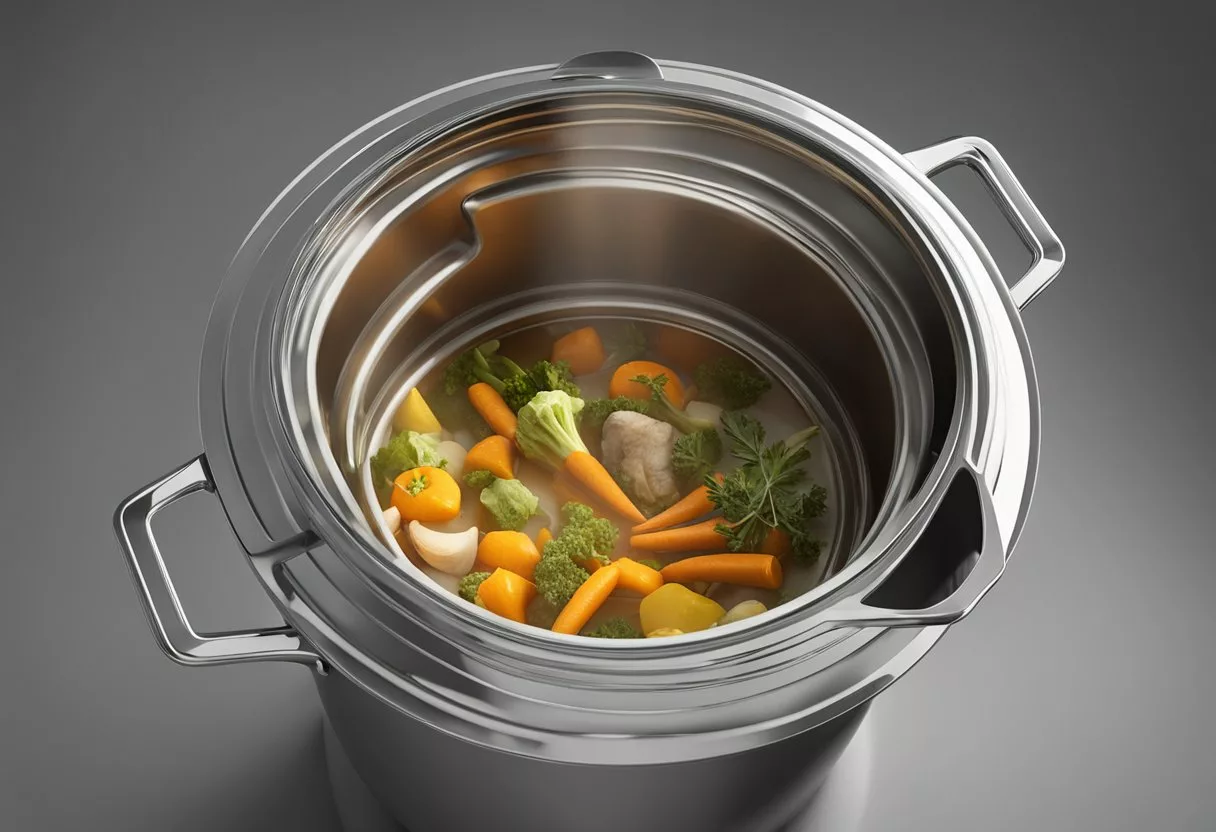
Selecting the Right Bones
The most important ingredient in making bone broth is, of course, the bones. Beef bones, chicken carcasses, turkey necks, and pork bones are all popular choices.
It’s important to select high-quality bones from grass-fed, organic, or pasture-raised animals. Look for bones with plenty of connective tissue, such as feet, marrow bones, and oxtail, as these will produce a gelatinous broth that is rich in collagen and nutrients.
Vegetables and Herbs for Flavor
While the bones are the star of the show, vegetables and herbs can add depth and flavor to your broth.
Onion, garlic, celery, and carrot are classic choices, but you can also add other veggies like leeks, mushrooms, and bell peppers. Fresh herbs like parsley, thyme, and bay leaves can also add savory notes to your broth.
Cooking Techniques
There are a few different ways to cook bone broth, but the most common method is to simmer the bones and vegetables in water for several hours.
Some recipes call for roasting the bones first to enhance their flavor, while others suggest adding apple cider vinegar to help extract minerals from the bones. Salt and pepper can be added for seasoning, but keep in mind that bones contain some sodium naturally.
To make beef bone broth, for example, you would start by roasting beef bones in the oven until they are browned and fragrant. Then, you would add the bones to a large pot with water, onion, garlic, celery, carrots, and any other desired vegetables and herbs.
The mixture would be brought to a boil, skimmed of any foam that rises to the surface, and then simmered for at least 12 hours, or up to 24 hours for a richer broth. Finally, the broth would be strained and seasoned to taste before being stored in the refrigerator or freezer.
Methods of Cooking Bone Broth
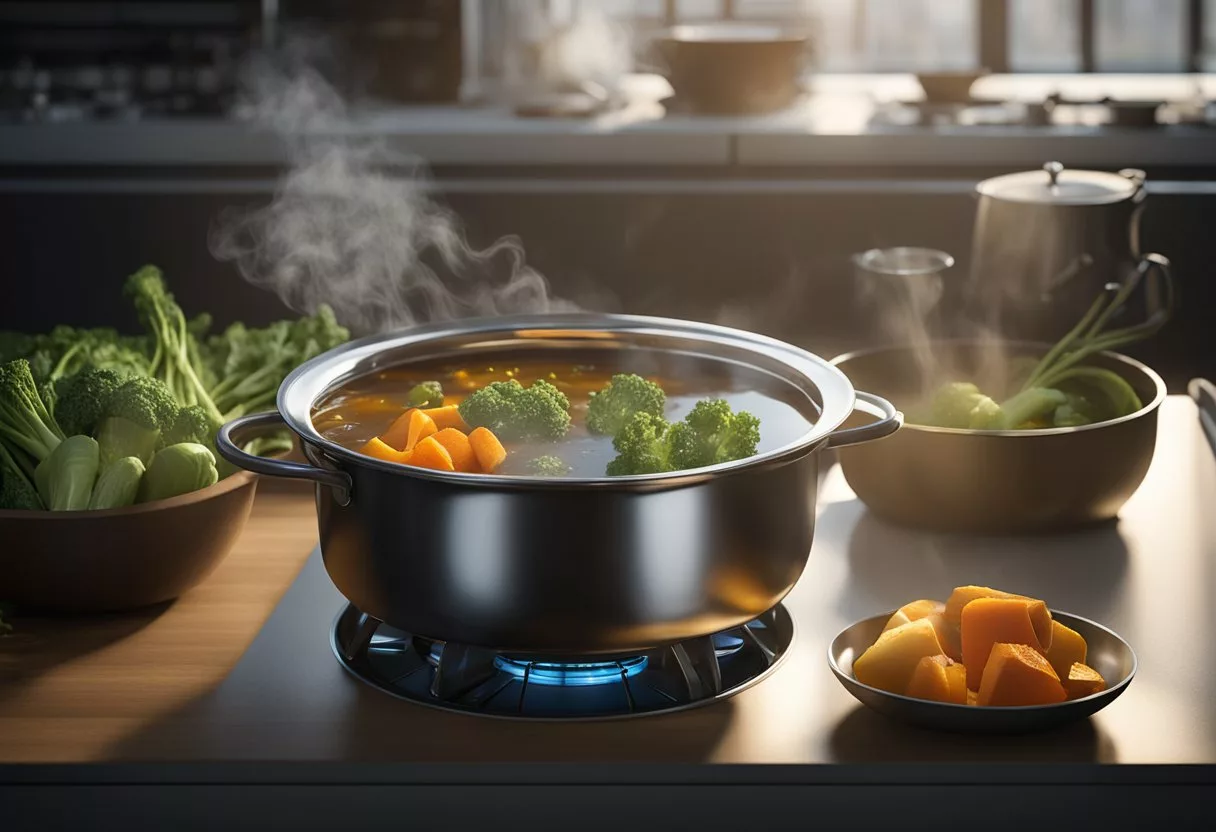
Bone broth can be cooked using different methods, including stovetop simmering, using a slow cooker, pressure cooking, and instant pot technique. Each method has its own advantages and disadvantages, and the choice of method depends on the cook’s preference and available equipment.
Stovetop Simmering
Stovetop simmering is a traditional method of cooking bone broth.
To make bone broth on the stovetop, the bones are first roasted to enhance their flavor and then simmered in water for several hours. The addition of vegetables and herbs such as thyme can further enhance the flavor of the broth. The broth is then strained to remove any solids, and the resulting liquid can be used as a base for soups, stews, or gravies.
Using a Slow Cooker
Using a slow cooker is an easy and convenient way to make bone broth.
The bones are first roasted and then placed in the slow cooker with water and any desired vegetables and herbs. The slow cooker is then set to low heat and left to cook for several hours, usually overnight. The resulting broth is rich and flavorful and can be used in a variety of dishes.
Pressure Cooking
Pressure cooking is a faster method of making bone broth.
The bones are first roasted and then placed in a pressure cooker with water and any desired vegetables and herbs. The pressure cooker is then sealed and allowed to cook for a shorter period of time compared to stovetop simmering or slow cooking. The resulting broth is rich and flavorful and can be used in a variety of dishes.
Instant Pot Technique
The Instant Pot is a popular electric pressure cooker that can also be used to make bone broth.
To make bone broth using the Instant Pot, the bones are first roasted and then placed in the Instant Pot with water and any desired vegetables and herbs. The Instant Pot is then set to pressure cook for a shorter period of time compared to stovetop simmering or slow cooking. The resulting broth is rich and flavorful and can be used in a variety of dishes.
Serving and Storage
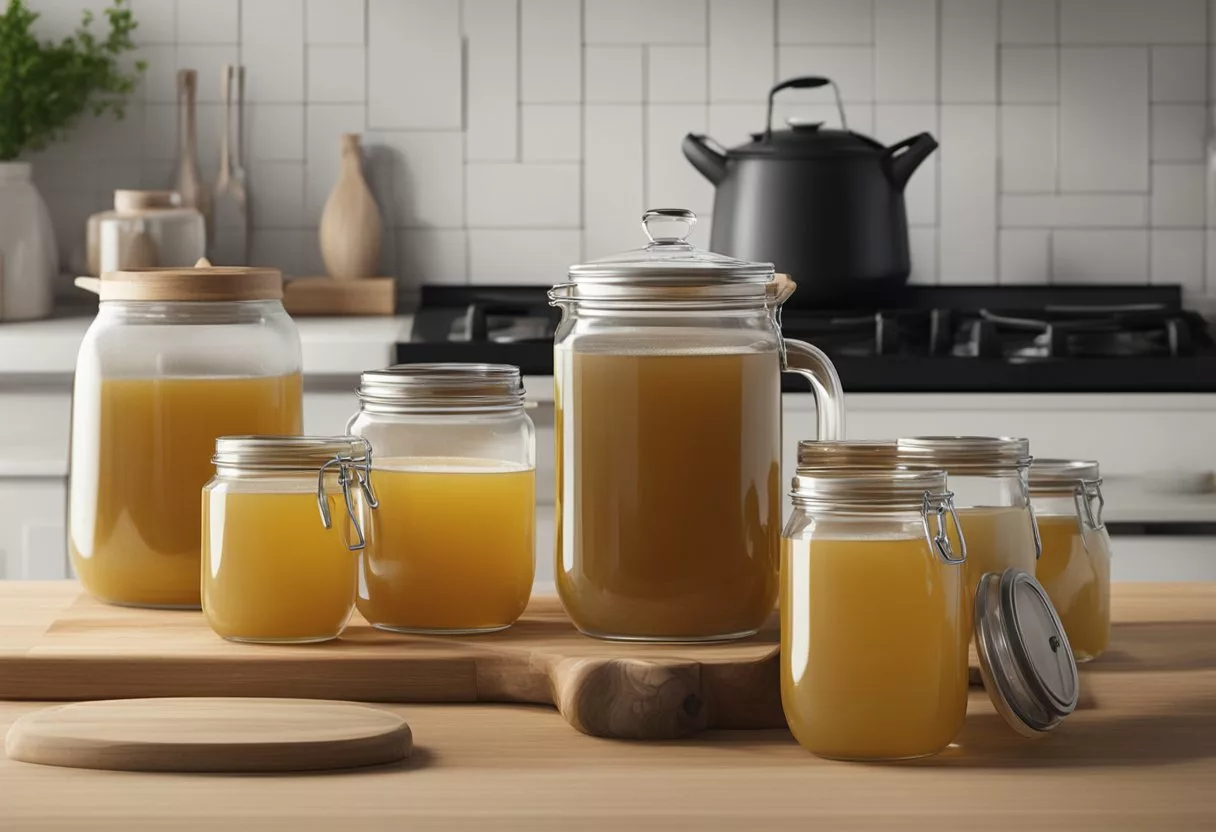
Incorporating Bone Broth into Meals
Bone broth can be incorporated into a variety of meals, including soups, sauces, and gravies. It can be used as a base for soups and stews. It can also be added to sauces and gravies to enhance the flavor and nutrition.
Bone broth can also be used as a cooking liquid for grains and legumes. This adds extra nutrients and flavor to the dish.
Proper Storage and Shelf Life
To ensure the safety and quality of bone broth, it is important to store it properly. When storing bone broth in the refrigerator, it should be kept at a temperature below 40°F (4°C). This slows down the growth of bacteria and keeps the broth fresh for a longer period.
It’s advisable to store the broth in airtight containers to prevent contamination and maintain its flavor. Bone broth can be stored in the refrigerator for up to 4 days.
Freezing and Reheating Tips
Bone broth can also be frozen for longer-term storage. For best results, bone broth should be frozen in airtight containers or freezer-safe bags with the air removed to prevent freezer burn.
When freezing bone broth, make sure to leave enough space for expansion. Bone broth can be frozen for up to 6 months.
To reheat bone broth, it can be thawed in the refrigerator overnight or in a microwave-safe container in the microwave.
When reheating bone broth on the stovetop, gently heat it over low to medium heat. Stir occasionally to ensure even heating. Boiling bone broth can affect its flavor and texture.
Considerations and Best Practices
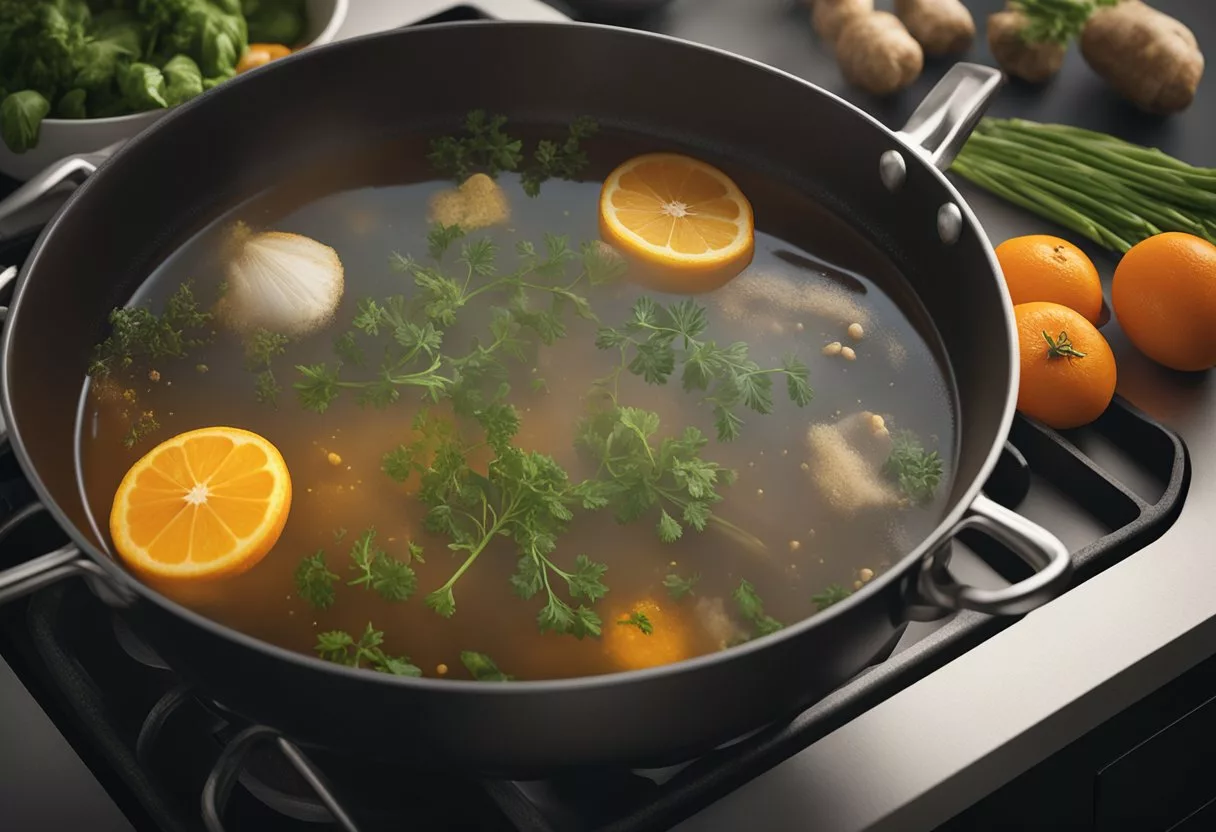
Quality of Ingredients
When making bone broth, the quality of the ingredients used is crucial. It is recommended to use high-quality bones from grass-fed, organic, and pasture-raised animals.
This ensures that the broth is free from harmful additives, hormones, and antibiotics. Using high-quality bones also ensures that the broth is more nutritious and flavorful.
Potential Contaminants
One potential concern when making bone broth is the risk of contamination. To avoid this, handle the bones and broth carefully to prevent any potential contamination.
This includes washing your hands before and after handling the bones, using clean utensils and equipment, and storing the broth properly. It is also recommended to use bones from trusted sources to reduce the risk of contamination.
Culinary Variations
Bone broth can be made in a variety of ways, and there are many culinary variations to consider. Some people prefer to add vegetables, herbs, and spices to their broth to enhance the flavor and nutrition.
Others prefer to simmer their broth for longer periods of time to extract more nutrients and flavor. It is important to experiment with different variations to find the one that works best for you.
Special Diets and Bone Broth
Bone Broth for Vegetarians
Bone broth is typically made from animal bones, making it unsuitable for vegetarians. However, vegetarians can still enjoy the benefits of bone broth by making a vegetable broth using a variety of vegetables such as carrots, celery, onions, and garlic.
Adding seaweed to the broth can help provide the body with essential electrolytes such as sodium, potassium, and magnesium.
Keto and Paleo Considerations
Bone broth is a staple in the keto and paleo diets due to its high protein content and low-carb nature. When making bone broth for these diets, it is important to use high-quality bones from grass-fed or pasture-raised animals.
Additionally, make sure to use organic vegetables to avoid exposure to harmful pesticides.
Allergies and Sensitivities
Individuals with allergies or sensitivities to certain foods can still enjoy bone broth by making adjustments to the recipe.
For example, those with a shellfish allergy can use chicken stock instead of shrimp or crab shells. Those with a dairy sensitivity can use water or a non-dairy milk alternative instead of cow’s milk in the recipe.
Frequently Asked Questions
How can bone broth contribute to overall wellness?
Bone broth is a nutrient-dense food that can contribute to overall wellness in several ways. It is rich in collagen, which is essential for healthy skin, hair, and nails.
Additionally, it contains amino acids such as glycine and proline, which are important for supporting a healthy gut lining and immune system. Bone broth can also provide minerals such as calcium, magnesium, and phosphorus, which are essential for bone health.
What are the nutritional components of bone broth?
Bone broth is primarily made up of water, collagen, and minerals. It also contains amino acids such as glycine and proline, as well as glucosamine and chondroitin, which are beneficial for joint health.
Additionally, bone broth can be a good source of vitamins and minerals, depending on the type of bones used and the length of time it is cooked.
Are there any potential negative effects from consuming bone broth?
While bone broth is generally considered safe for most people, there are some potential negative effects to be aware of. It is possible for bone broth to be contaminated with harmful bacteria, so it is important to choose high-quality products and handle them properly.
Additionally, bone broth can be high in sodium, so individuals who are sensitive to salt or have high blood pressure should consume it in moderation.
How does bone broth support weight loss efforts?
Bone broth can support weight loss efforts in several ways. It is a low-calorie, nutrient-dense food that can help to keep you feeling full and satisfied.
Additionally, the collagen in bone broth can help to support healthy skin elasticity and reduce the appearance of cellulite, which can be a concern for some individuals.
What should one look for when choosing a high-quality bone broth product?
When choosing a high-quality bone broth product, there are several factors to consider. Look for products made from high-quality, grass-fed or pasture-raised animals, as these will be more nutrient-dense and free from harmful additives.
Additionally, choose products that are organic and free from preservatives and other artificial ingredients.
How often should one consume bone broth for optimal health benefits?
The optimal frequency for consuming bone broth will vary depending on individual needs and preferences. Some people may choose to consume it daily, while others may only consume it a few times per week.
It is important to listen to your body and adjust your intake as needed to support your overall health and wellness goals.